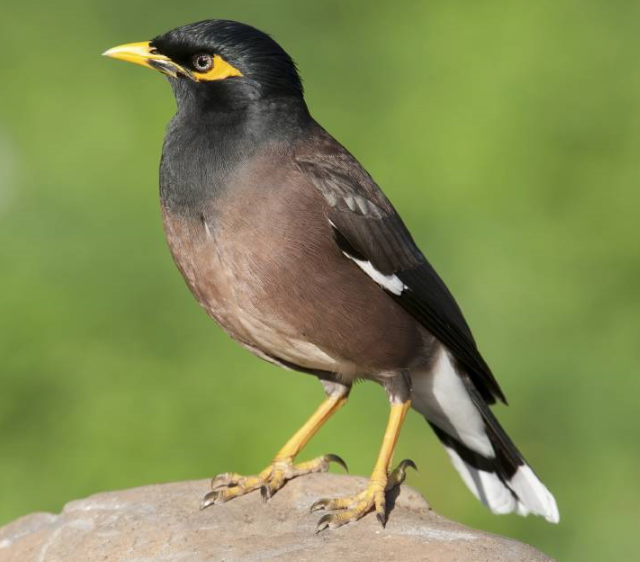The introduced Indian Myna Bird is sometimes confused with the native Noisy Miner - a much less destructive animal. Here's how to tell the difference.
Introduced species, the Indian Myna
Indian Myna birds are most often seen strutting around the ground looking for food, generally in places where humans gather and eat.
They are opportunistic scavengers and will eat almost anything that is easy to find, this is why they are sometimes referred to as "rats of the sky".
They gather noisily in large numbers to roost (sleep), often in non-native trees and palms.

Description: Black head, yellow beak and eye patch, chocolate brown body, white wing patch (highly visible in flight), long yellow legs.
Australian native, the Noisy Miner
The Noisy Miner is a small gregarious honeyeater, most often seen feeding on native plants, eating insects and nectar from the flowers.
It is aggressive enough to frighten away cats and other predators, but timid enough to be frightened of humans.
It is an Australian native and, as such is protected. Unlike the introduced Indian Myna, the Noisy Miner does not kill other native birds or mammals.
They have a very loud call that sounds like a repetitive 'pwee, pwee, pwee'

Description: Black hood, pale grey feathers, white coat, yellow beak and eye patch, flesh coloured legs, longer tail.